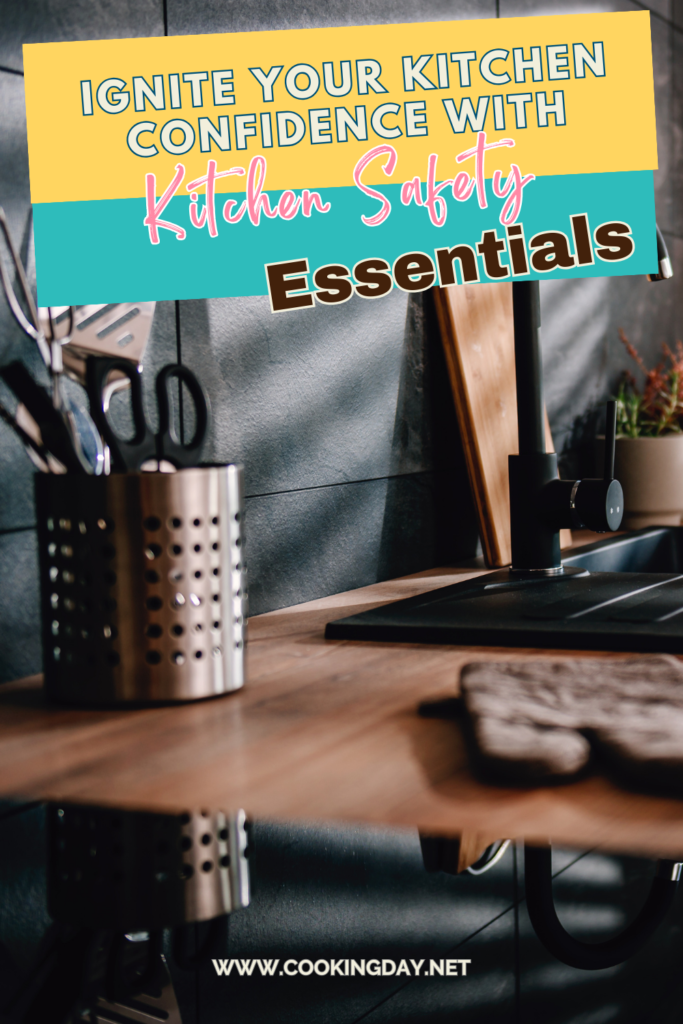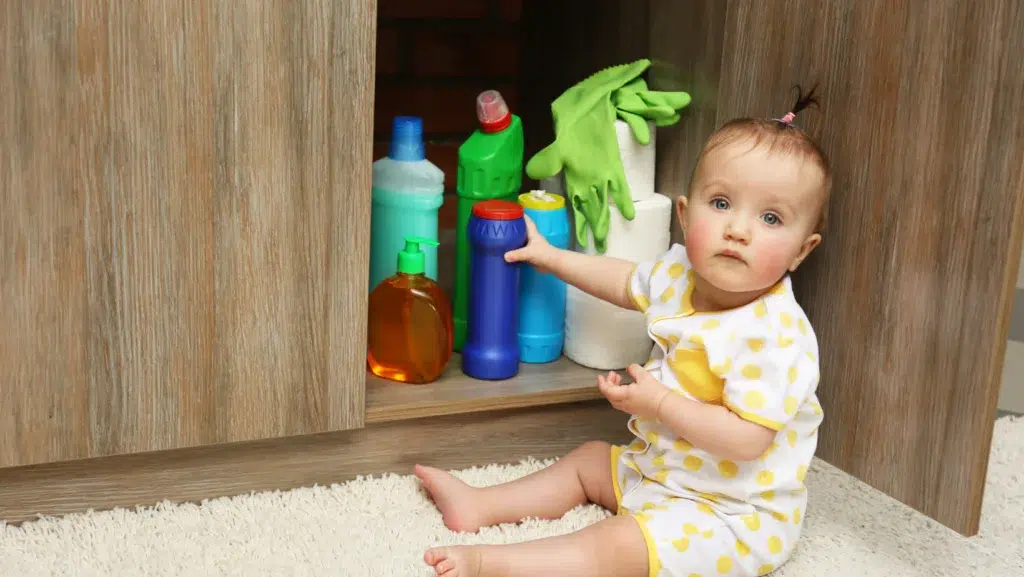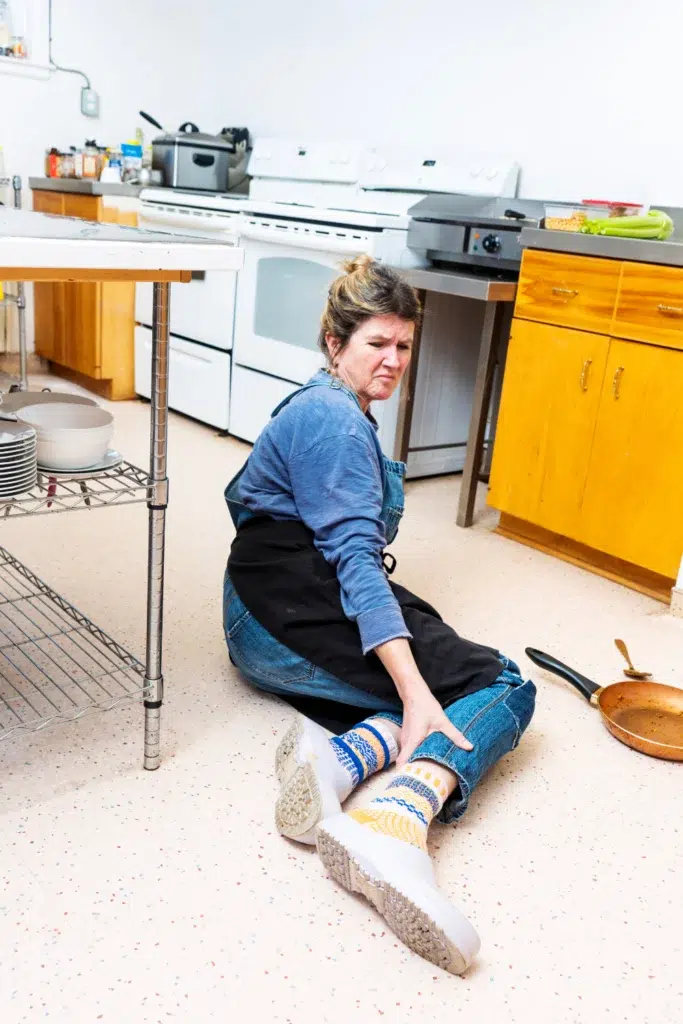Some links on this page are affiliate links. This means we may earn a commission at no additional cost to you if you click through and make a purchase, you can check our Affiliate Disclosure. Thank you for your support!
Are you ready to turn up the heat in your cooking space while keeping it cool and safe? Well, you’re in the right place! Kitchen safety isn’t just about dodging those pesky finger nicks or avoiding a splatter of hot oil. It’s the secret ingredient that can truly make your kitchen experiences shine, boosting your confidence to tackle any recipe that comes your way.
Let’s talk about kitchen safety essentials. They’re your trusty sidekicks, the unsung heroes that keep your culinary quests on track. Think of kitchen safety like the trusty oven mitts that keep your hands safe or the sharp knife that cuts precisely where you need it. These essentials help you cook with ease, knowing you’ve got everything under control.
But here’s the juicy part: mastering these safety essentials does more than protect your pinkies; it turns you into a culinary maestro, calm and composed, ready to whip up a storm with a smile. So, tie on your apron, and let’s get cooking with safety as our guide – your kitchen confidence is about to skyrocket!
Alright, let’s get down to business and lay the groundwork for a safe kitchen! Kitchen safety isn’t rocket science; it’s all about keeping an eye out for those sneaky dangers and having a plan to tackle them.

Understanding the Basics of Kitchen Safety
First, let’s play a game of “I Spy” with a safety twist. Take a look around your kitchen. Do you see any cords draping off the counter? How about that puddle of water near the sink? Or is the panhandle sticking out, just waiting to trip someone? Spotting these potential hazards is step one. You’ve got to know what you’re up against to keep your kitchen a no-ouch zone!
Now, let’s talk turkey – or, rather, organization. Clear counters and well-thought-out storage aren’t just for show; they’re a safety must. Keep your cooking space clutter-free so you won’t have to dance around like dodging laser beams in an action movie. Store knives in a block or drawer, keep electrical cords tucked away and make sure your walkways are clear. A tidy kitchen is a safer kitchen!
Essential Safety Tools Every Cook Should Have
Like a superhero needs a trusty toolkit, cooks need their kitchen safety essentials. Let’s start with the big one – a fire extinguisher. Ensure you have one, and it’s easily accessible, not hidden behind a stack of cookie sheets.
Next up the first-aid kit. Whether it’s a minor nick or a burn, being ready means you can fix up a boo-boo and get back to your culinary conquests. Keep it stocked and within reach because no one wants to play hide and seek when they need a bandage.
Let’s not forget about those non-slip mats. They’re like the unsung heroes under your feet, keeping you grounded when spills happen. And trust me, they will happen.
Last but not least, suit up with personal protective equipment! I’m talking about gloves to keep those fingers pretty and aprons to shield you from splashes and stains. Think of it as your kitchen armor.
Remember, having these kitchen safety essentials at hand means you’re not just prepared; you’re in control. So let’s keep it safe, keep it fun, and turn the confidence up to the max in your kitchen!

ALSO READ: Embrace Effortless Elegance With No-Heat Cooking Techniques
Cooking with Care – Preventative Practices
Cooking should be fun, right? But like all great things, it comes with a ‘handle with care’ tag. So, let’s dive into some preventative practices that keep troubles at bay while you’re juggling pots and pans.
The Do’s and Don’ts of Knife Handling
Knives are like the ninjas of the kitchen – swift, sharp, and super important. Here’s how to handle them like a pro:
- Do:
- Keep your knives sharp. A sharp knife is actually safer because it won’t slip off food and cut you.
- Use the right knife for the job. Big veggies need a big knife, and those intricate cuts need a smaller, nimbler blade.
- Slice away from your body. It’s all about control and keeping those fingers intact.
- Store knives in a block or on a magnetic strip. It keeps them out of the way and off your toes!
- Don’t:
- Leave knives soaking in the sink. Ouch! Hidden knives can lead to nasty surprises.
- Put your knives in the dishwasher. It dulls the blades and isn’t safe for you when unloading.
- Try to catch a falling knife. Step back and let gravity do its thing safely.
Why Temperature Matters: Avoiding Foodborne Illness
The sizzle in the pan isn’t just for sound effects – it’s science ensuring your food is safe to eat. Here’s the scoop on temperatures:
- Always cook your food to the right temperature. Still trying to figure out what’s what? Keep a food thermometer handy, and say goodbye to the guessing game.
- All poultry must be cooked to 165°F, ground meats to 160°F, and whole meats to 145°F. Keep in mind these crucial temperatures.
- Keep your fridge cool, under 40°F, to keep the bacteria away from your leftovers.
Keeping a Clean Culinary Canvas
Think of cleaning like the seasoning of cooking – it enhances everything. Here’s how to keep your kitchen spotless:

- Wipe down surfaces before and after you cook. It’s like setting the stage for your next masterpiece.
- Sanitize those sponges and dishcloths regularly. They can be party spots for germs.
- Master the art of rotation in your fridge and pantry. First in, first out keeps things fresh and safe.
By keeping these kitchen safety essentials in mind, you’re not just following rules – you’re making sure every meal is a masterpiece of taste and care. So go ahead, cook with confidence, and remember, a safe kitchen is your best kitchen! 🍳💚
ALSO READ: Unlock The Delights Of Cheeses: A Gourmet’s Guide To The Finest Varieties
Child-Proofing Your Kitchen for Family Safety 👶👨👩👧
Making your kitchen a safe spot for the little ones doesn’t have to be a daunting task. With a few tweaks and tricks, you can create a space that’s friendly for every member of the family. Let’s turn your kitchen into a kid-safe zone where safety meets fun!

Creating a Kid-Safe Zone
Here’s a handy checklist to make your kitchen a safer place for curious little hands:
- Lock it down: Use cabinet locks to keep chemicals and sharp objects out of reach.
- Stove safety tip: Cover the stove’s knobs to keep children from accidentally turning on the burners.
- Secure appliances: Keep appliance cords out of reach, and get appliances with a lock-out feature.
- Corner guards are a must: Soften the edges of countertops and tables with corner guards to protect against bumps.
- Anti-slip mats: Place these in strategic areas to reduce the risk of slips and falls.
Teaching Kitchen Safety to Kids
Getting kids on board with kitchen safety can be fun. Here are some engaging ways to teach them about staying safe:
- Make it a game: Create a scavenger hunt to identify potential hazards and safe spots in the kitchen.
- Role-play: Pretend to play different kitchen scenarios and practice what to do in each.
- Safety chefs: Involve them in safe cooking activities, like washing veggies or stirring cold ingredients.
- Storytime with a twist: Read stories about cooking safety and discuss the safety lessons in each tale.
Remember, kitchen safety essentials are not just tools and gadgets but also the knowledge we share and the environment we create. By teaching kids the ins and outs of a safe kitchen, you’re not only keeping them safe, but you’re also cooking up some great memories!
RECIPE: Mouthwatering & Creamy Parmesan Polenta Recipe: A Savory Delight!
Navigating Kitchen Mishaps with Confidence
Even the best of us can run into a bit of kitchen trouble now and then. The key is not to panic! Here’s how to handle common kitchen injuries like a pro and when to call in the experts.
First Response to Common Kitchen Injuries
When those “oops” moments strike, keep these tips in your back pocket:
- For Burns:
- Cool it down: Run cool (not cold) water over a burn immediately.
- Cover up: Protect the area with a sterile, non-adhesive bandage or clean cloth.
- Don’t pop: Leave any blisters that form alone – they’re nature’s bandages.
- For Cuts:
- Pressure on: Apply direct pressure with a clean cloth to stop the bleeding.
- Clean scene: Once the bleeding stops, rinse the cut with water and gently clean around the wound.
- Bandage brigade: Cover the cut with a clean bandage to keep out bacteria.
- For Falls and Sprains:
- Take a break: Sit down and rest the injured area.
- Ice ice baby: Apply ice wrapped in a towel to reduce swelling.
- Elevate: Keep the injured area raised above your heart if possible.
When to Seek Professional Help
Sometimes, you need to tag the experts. Here’s how to know when:
- For Burns:
- Seek help if the burn is more prominent than your hand, looks white or charred, or is on the face, hands, feet, or genitals.
- For Cuts:
- If you can’t stop the bleeding after 10 minutes of direct pressure, or if the cut is deep, it’s time to call a doctor.
- For Falls and Sprains:
- If you can’t move the injured area, or if it’s numb or misshapen, professional help is needed.

Remember, keeping a kit of kitchen safety essentials within easy reach and knowing these first-response steps can help you navigate kitchen mishaps with confidence. Always keep your cool, and when in doubt, shout out for help!
ALSO READ: Revealing The Magic Of Eggs In Worldwide Cuisine
Conclusion
Alright, let’s wrap this up and put a neat little bow on it! Remember, kitchen safety isn’t just about dodging disasters; it’s about cooking up a storm with confidence and peace of mind. Here’s a quick recap of those kitchen safety essentials:
- Stay Organized: Keep those spills and messes at bay with a tidy workspace.
- Tool Up: Equip yourself with the right tools – think sharp knives, non-slip mats, and fire extinguishers.
- Kid-Proofing: Lock up those cabinets and keep the little ones safe with some child-proofing savvy.
- Mishap Management: Know how to handle a burn or a cut – stay calm and treat it right.
- Knowledge is Power: Educate yourself and the family on what to do when things go south.
By sticking to these guidelines, you’ll not only make your kitchen a safer place, but you’ll also turn cooking into an even more enjoyable and stress-free activity. So, go ahead, apply these tips, and take control of your culinary domain with newfound confidence! Remember, a safe kitchen is the secret ingredient to every great meal. Happy cooking, everyone!
ALSO READ: What Makes An Ideal Kitchen? Key Factors To Consider
FAQs: Expert Answers to Your Kitchen Safety Questions
Do you have questions about keeping your kitchen safe? You’re not alone. Here are some straightforward answers to your most common kitchen safety questions.
What’s the first thing I should do if I have a kitchen fire?
- Stay calm. You can handle this.
- If the grease fire is small, put a lid on the pan to put out the flames. Switch the burner off.
- Never throw water on a grease fire; it’ll make it worse.
- For an oven fire, keep the door closed and turn off the heat.
- If the fire is out of control, get everyone out and call the fire department.
How can I ensure my kitchen is safe for all ages?
- Store sharp objects and toxic substances out of reach or in locked cabinets.
- Turn the pot handles toward the back of the stove and use the back burners.
- Keep a fire extinguisher and first aid kit easily accessible.
- Use appliance locks and stove knob covers, especially if you have curious kids or elderly with dementia at home.
Can you recommend any goofproof safety gadgets for a beginner?
Sure thing! Here are some gadgets that are great for beginners:
- A fire blanket – it’s super simple to use in case of a fire.
- Automatic stove shut-off devices – they turn off the heat if you forget.
- A good quality cutting board with a non-slip base to keep things stable while chopping.
- Finger guards for cutting – they’ll keep your fingers away from the blade.
How often should I check my kitchen for potential hazards?
Give your kitchen a safety once-over every month. Look for:
- Loose rugs that might trip someone.
- Dull knives that need sharpening (they’re more dangerous than sharp ones).
- Expired fire extinguishers and first aid supplies.
- Any appliances that have frayed cords or don’t work properly.
What are some common mistakes to avoid in kitchen safety?
- Leaving cooking food unattended – stay in the kitchen, especially if you’re frying, boiling, or grilling.
- Overloading electrical outlets – plug only one high-wattage appliance into each outlet.
- Wearing loose clothing or dangling sleeves while cooking.
- Forgetting to clean the lint from the grill or the oven – this can cause fires.
How can I teach my children about kitchen safety?
- Start with basic rules like ‘hot means don’t touch!’ and ‘knives are not toys!’
- Involve them in safe tasks like washing fruits and vegetables or setting the timer.
- Make it fun – use games and songs to teach them what’s safe and what’s not.
- Supervise them closely and praise them for following safety rules.
Remember, staying on top of your kitchen safety essentials means you’re always ready to cook up a storm worry-free! 🔍🍳

